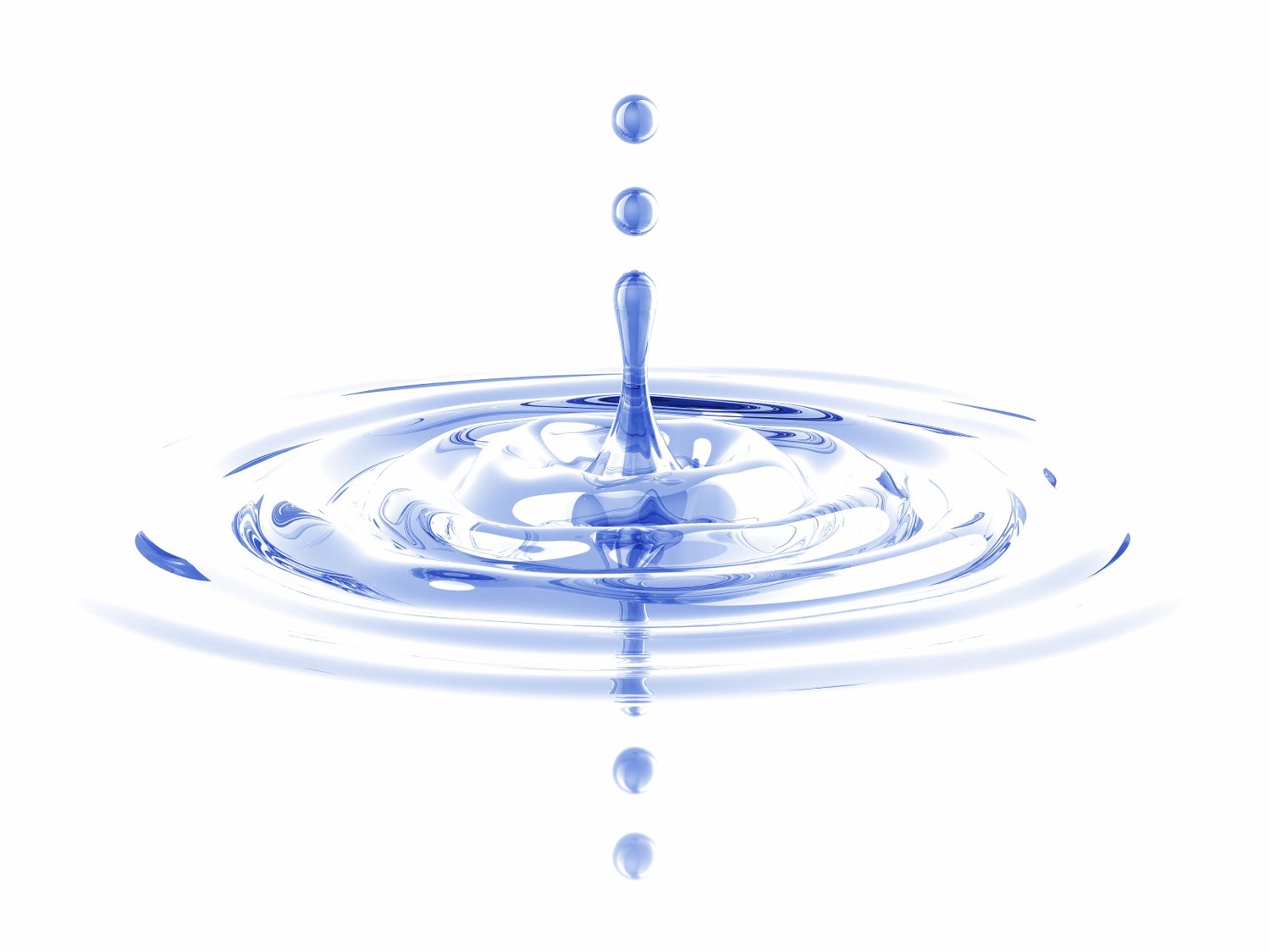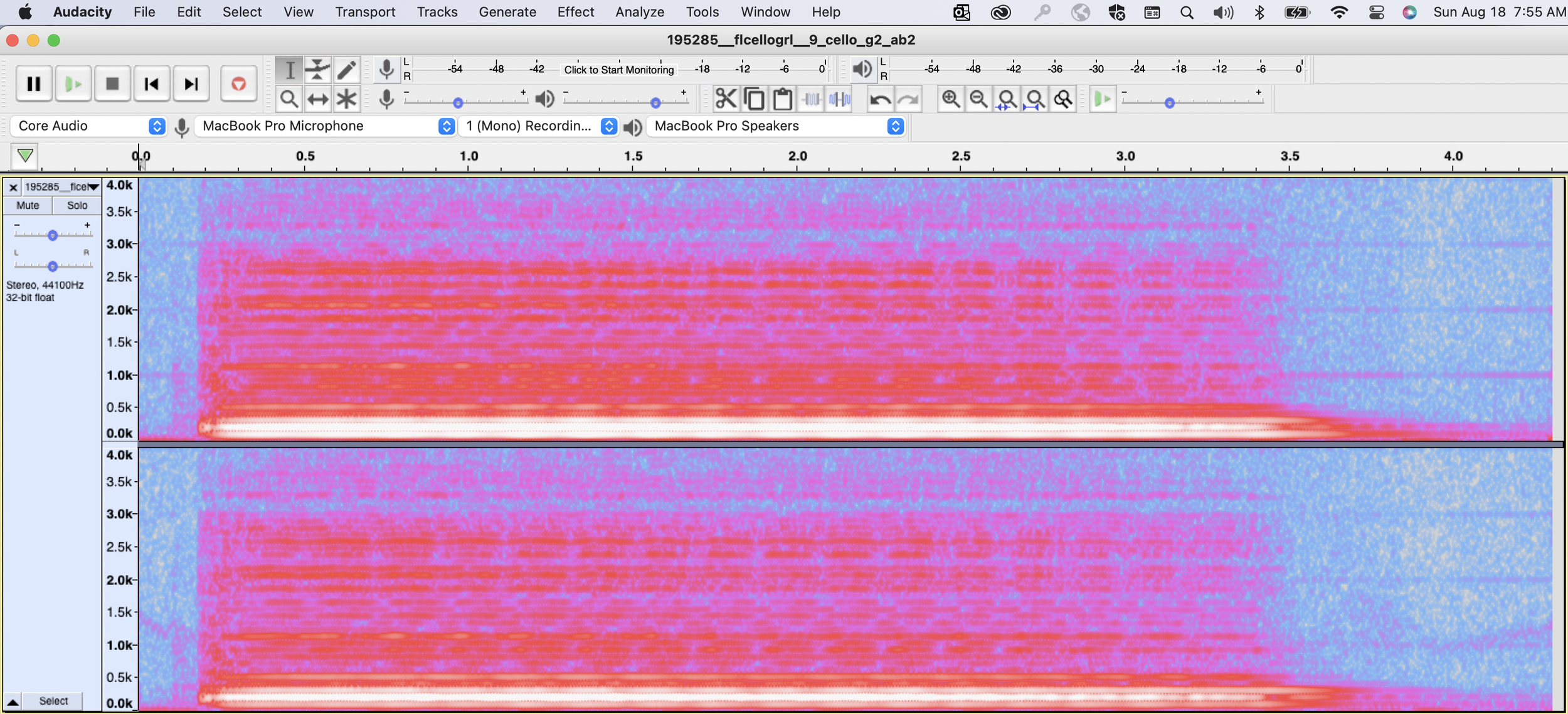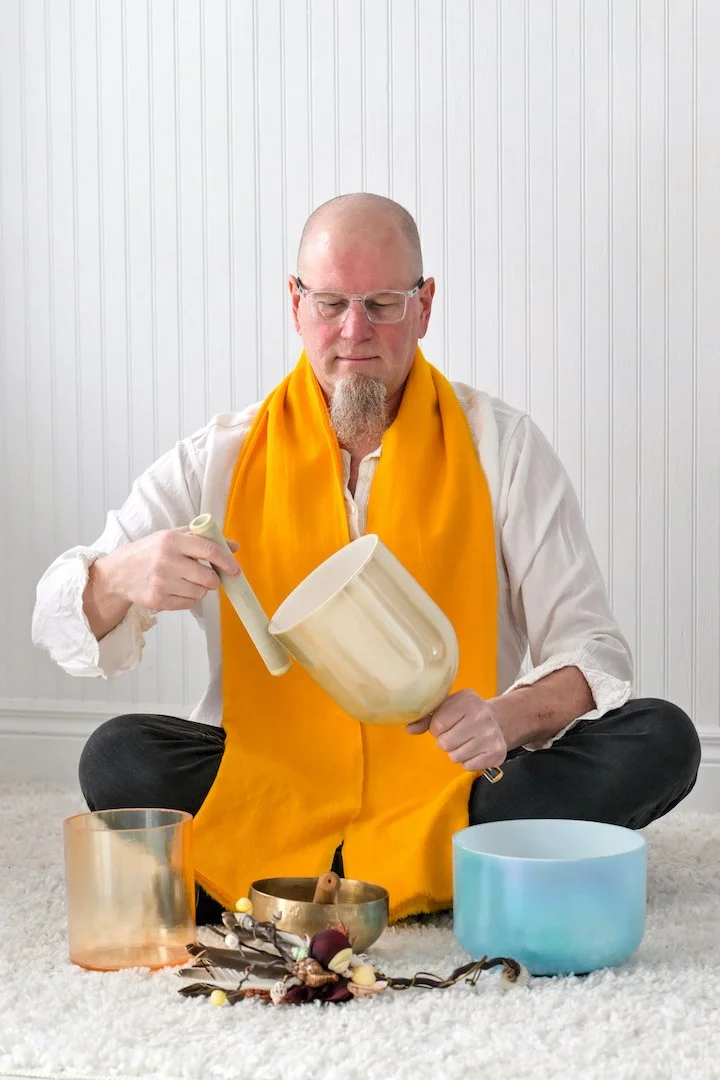Sir, may I have more resonance please?
The experiment
I recently created a simple experiment for a sound bath practitioner’s group I am a part of and this is the report of the results. You can see the original post here to read comments. Without identifying it, I posted the single frequency 417 Hz and asked these questions:
How do you feel listening to it?
Does it vibrate in a particular place in your body?
Does it impact your emotions?
Does that change from one listening to the next? From one day to the next?
Sonogram of 417 Hz sound
I coded responses as beneficial, neutral and detrimental, and for correlation with the 2nd chakra. I also counted responses for upper areas of the body mentioned often. There are obvious limitations to the way I did this study, and I learned some ways I could ask more targeted questions, and collect responses using a Likert scale, which would have yielded more precise results for more specific conclusions. The purpose of this experiment was educational, and to demonstrate that we all perceive, listen and interpret sound differently.
A total of 70 people responded when I closed the experiment after someone identified the frequency in the comments, and here are the results.
The Results
Survey results for the 417 Hz tone
Discussion
The questions were prompted in part by the bold claims made of this frequency on solfeggioguide.com. The frequency 417 Hz, they say, correlates to the 2nd Chakra and creates “Resolve.” They also claim that it will “produce positive energy to bring about change.” And it “clears destructive influences of past traumas, puts you in touch with an inexhaustible source of energy.”
I want to thank all the people who responded and gave their feedback. I chose a solfeggio frequency to illustrate what I suspected would happen: everyone would respond differently to it, and there would be little consensus on what it did, and where it did it as claimed. There are some things that emerge out of it for me, that I hope will help people learning to be practitioners. Some people hated the sound initially, but as they listened longer, their inner state began to shift. These listeners understand one of my first principles of practicing sound: that healing and growth are rarely comfortable, and it is in listening too, breathing into, and giving that discomfort our attention and love, that we can move through these challenges. There were a few people who actually received physical manipulations or relief of symptoms (neck popped and headache relief), however, not in the area claimed by the solfeggio page. Another principle for me is to learn to listen with more than our ears. A third understanding: what some people could not stand, others found benefit from. One person’s poison is another’s balm. Sound is very situation, context and individually dependent.
Universal claims about what specific frequencies can accomplish such as the solfeggio frequencies are fallacious and without merit. Such claims require rigorous clinical research to validate. I have seen people who staunchly defend them because of a belief system. I know the power of beliefs. I use them daily to improve my mind, body and spirit. But to make bold claims about global applications and universal benefit based on my own singular experience, is at best, unethical, and at worst manipulative. Those cultish belief systems in frequency are misleading and unnecessary, except for selling merch. A far more useful approach in sound healing practice is listening to resonance!
Suggestions for practitioners
Resonance is the place in which sound lives. Focusing on prescriptive frequencies robs a practitioner of agency. It means someone else has decided what is good for you and your clients. Focusing on resonance invites you to reclaim your sovereignty as a practitioner and to put your energies into LISTENING! Resonance is location and situation specific, and there is no frequency that is ever going to resonate the same in any two spaces, let alone with any two clients. Further, since sound requires matter to propagate, we know it “acts” upon our bodies and the bodies of our clients. Our whole body is a transducer of sound, not just our ears! Listening intently with just our ears is a great starting point, but we need to develop a practice of listening with our whole mind, body and spirit in order to best serve others. The good news is, we can easily practice listening with our bodies! Play a bowl, or instrument, or better yet, sing (tone), and listen to where it vibrates in your body. It takes practice, which you can do even listening to music, and it is well worth it. Listening with your spirit may take more practice because it requires we let go of judgment about how something “sounds” with just our ears. It is this practice of listening to and for resonance, and learning to respond with non-judgmental intuition, that is at the heart of my sound healing work. We owe it to our clients to listen with the highest bandwidth of perception possible, and that is a life-long pursuit which I’ve been practicing for 50+ years. Oh, and when we listen without judgment from that whole mind, body and spirit perspective, we receive more ourselves during sessions.
I know I will get comments about how using a single frequency created an artificial construct that sounded electronic and flat. But here’s the thing: the only way to achieve a single frequency is through electronic means. A sine wave (which is what a single frequency is) is very rare in nature, especially at a specific frequency. To use an instrumental note as some suggested, means that there is a whole harmonic spectrum of overtones present, so we are not listening to a single frequency any more. Wikipedia’s article on harmonics (in music, not electricity!) is a good overview of the spectrum created by instruments with vibrating strings or tubular constructions. Here is the spectrum of a cello note, A-flat, an octave and a few Hz lower than the 417 above, looks like. You can see many more frequencies above the fundamental (the bright white line). Yes, this sound is perhaps more interesting, but it is not what the solfeggio single frequency claim is about.
Here is an A-flat cello note with all of its rich overtones.
Cello spectrum at Ab3 (207 Hz)-an octave and a few Hz lower than the 417 frequency.
As you can see, there are way more than just a single fundamental frequency. And that’s the point! Frequencies by themselves are only used in clinical practices for testing or treatment. I’ve analyzed a piece of solfeggio music before and there was way more going on than a single frequency. Oftentimes the proclaimed magic frequency is not even present. Any piece of music claiming to be a specific frequency will have many more frequencies. I am not saying this music is bad, or wrong. But it is often not what it claims to be. It may still be helpful, and there is nothing wrong with that. But it does illustrate that frequencies by themselves are only meaningful in relationship with each other, and that is a huge metaphor for the healing practice of sound. And so I encourage you all to think about resonance instead! Doing so will put you 100% in charge of your own practice!
Incidentally, 417 Hz is much closer to A-flat in A=440 than it is in 432 tuning. 528 Hz, the supposed “love” frequency is also closer to C in A=440 than in A=432 tuning. You can compare specific frequencies on notes within the two tuning standards here. It also includes helpful information about frequency ranges of instruments common in music which can be helpful for engineering, and mixing, as well as instrument ranges in notes and Hz (including harmonic spectra!) which can be helpful for composing, orchestrating, and performing. But alas, the comparing of two tuning standards is for another blog!
For further study
For a great summary clinical research literature using frequencies to treat specific conditions, this article Possible Mechanisms for the Effects of Sound Vibration on Human Health primarily covers the low frequency range (0-250 Hz). It has a fantastic bibliography and provides a great discussion on the distinction between “music” (involving cognitive and psychoacoustic processes) and “sound vibration” (involving physiological stimulation, largely through “rhythmicity”), in clinical research. I know that many of you are not interested in this level of research. And one need not be to be an effective sound practitioner. But I wanted to give some perspective of the rigor involved in demonstrating claims about how specific frequencies can heal. I wish you all the best in your practices!
Dr. Paul Rudy is a life-long teacher and leaner. He is an award-winning composer, sound artist, sound practitioner, photographer and land artist. He is Curators’ Distinguished Professor of Music Composition, specializing in electroacoustic composition, at the UMKC Conservatory since 1998, where he is currently studying the impact of sound on speech communication in the operating room with Surgilab (UMKC Medical School). His youtube channel @innersoundworlds houses healing mantra music, and his CD series 2012 Stories can be found online.





